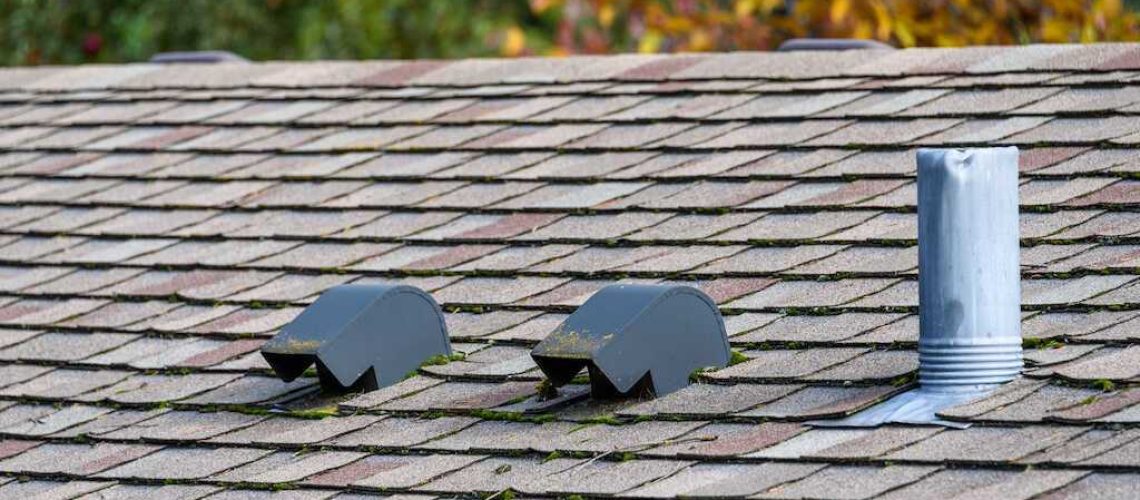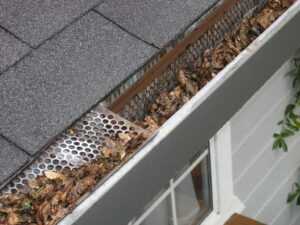Whether you are noticing signs of inadequate roof ventilation in your home or you want to prevent problems from occurring, having the proper roof vents installed in your home is vital. With the correct number of exhaust vents and intake vents in place, your roof will last much longer and feel more comfortable inside. Here is what you should know about the roof vents for your home.
What Is a Roof Vent?
A roof vent is a defined opening on your roof that allows air to flow into and out of your attic. In most cases, roof vents are made of metal. However, hard PVC can also be used to create vents for your roof, depending on the specific type and location.
The roof vents on your home play a vital role in regulating the temperature in your home, reducing humidity, and improving airflow. It is vital that all roofs have a combination of both intake and exhaust vents to ensure proper airflow so that your roof can continue to protect your home for many years to come. There are generally two main types of roof vents located on homes. These include intake vents and exhaust vents.
Intake Vents in the Attic
The intake vents on the roof are designed to allow cooler air to enter your attic. These roof vents force out the hot air that has built up inside to prevent moisture. Since colder air sinks down and hot air rises, attic air intake vents are typically installed along the lower portion of the roofline and below the area where exhaust vents are positioned. This helps to improve the flow of air by driving cool air in and pushing the warmer air up and out.
Exhaust Vents in the Attic
Exhaust roof vents provide an exit route for the hot air inside the home and the moisture that comes along with it. When hot air is trapped in the attic, it can increase the amount of moisture inside. It can cause the area to become stagnant and stale and can result in the growth of mold and mildew. It can also lead to wood rot, which can compromise the structure of the roof. These vents are typically placed on the top of the roof and along the ridge line to optimize airflow. This ensures the warm and moist air is able to rise up and out of your home.
The Importance of Roof Vents
The roof vents on your home are extremely important for a variety of reasons. Having an adequate ventilation system can provide you with several benefits when it comes to maintaining your home and remaining comfortable. These benefits include:
- Helping to maintain the warranty on your roof (inadequate ventilation can void the warranty)
- Help reduce the development of ice dams and icicles on the eaves of your roof
- Prevent water damage and leaking inside your home and around your roof
- They help keep your energy bills power
- Help to keep your home’s interior at a comfortable temperature all year round
- Drastically improve the quality of air inside your home
- Reduce the level of humidity in your home, especially your attic
- Help prolong the life of your roof
It is vital to select the right system in order to maximize the benefits you receive from your roof vents.
Type of Roof Vent Systems Available
The vents on your roof can fall into different categories. These include either vertical or horizontal or active or passive. Considering that all homes are different, it only makes sense to select the system that is most appropriate for the size, slant, and shape of your roof.
Active and Passive Ventilation
These ventilation systems are equipped with fans and wind-powered turbines. Active systems use electricity and other active means are also used to draw fresh air from outside into the home and push the warm and moist air out. Active systems are often an exceptional choice for homes that have little to no wind exposure.
Alternatively, passive systems can be quite simple, including only an opening or a vent. Rather than relying on electricity, passive systems rely only on wind and pressure to draw fresh and in and direct warm, stale air out.
Vertical and Horizontal Ventilation
In addition, a system can be classified as either horizontal or vertical. Vertical systems are those which contain soffit vents and ridge vents. These systems are designed to draw air in from below the roof line and push it vertically out of the roof.
Horizontal ventilation systems utilize gable vents and box vents to ensure airflow. These vents bring air into the home and release it back outdoors in a cross-ventilation pattern.
Homeowners have the ability to install both active and passive ventilation systems in their homes to improve the flow of air. However, vertical and horizontal ventilation systems can not be installed in the same home as the air will cross over each other and not exit the home correctly.
When selecting the right system for your home, it is important to take into account the home construction materials and the HVAC system to determine how much ventilation is needed to get the air moving in and out of the home in the most effective way.
To determine the most appropriate option for the roof vents on your home, we encourage you to contact our professionals at Windlickers Roofing & Exteriors.
Get Help With Your Roof Vents Today
With every project, our professionals at Windlickers Roofing & Exteriors remain committed to providing brilliant customer service and delivering quality results that last. Our team can meet with you for an inspection to determine what type of issues you may be dealing with. We will provide you with a free estimate and explain the process to you so that you know what to expect at every step. With nearly three decades of experience helping homeowners across Oconomowoc, WI, and surrounding areas, you can depend on our team to provide you with quality services and products that last. Get started by reaching out to our team today at (414) 531-1729 to schedule an appointment.



